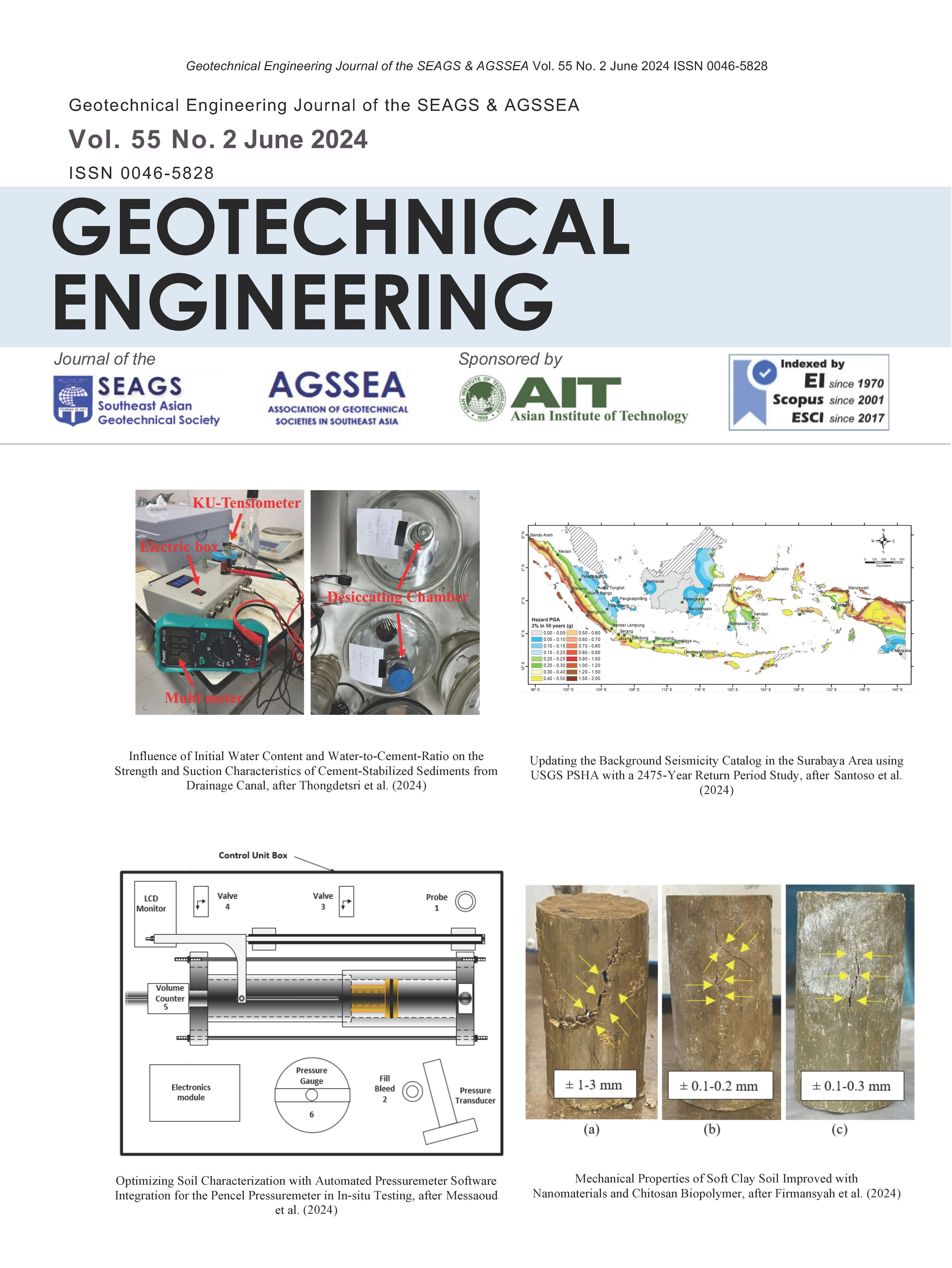A Systematic Review on Slope Stability and Deformation Analysis Subjected to Rainfall and Earthquake
Main Article Content
Abstract
The most common type of natural disaster is a landslide which impact millions of people and costing tens of thousands of lives and billions of dollars in damage every year. Earthquakes have the potential to trigger landslides of varying sizes in mountainous regions, endangering the residential communities situated at the base of mountains. The earthquake impact on the slope stability during the subsequent rains is not considerable in certain regions where the earthquake impact is not high enough to produce major soil movement. However, in some Landslide prone regions, the stability of slopes that are impacted by subsequent rains is significantly influenced by massive fissures on the surface of the slopes that are generated by earthquake shaking. The coupling effect of these two factors can significantly reduce the stability and safety of slopes, leading to catastrophic consequences. This paper reviewed the response of slopes under the combined influence of rain and seismic loading. This critical review highlights the importance of integrating rainfall and earthquake parameters simultaneously in slope deformation studies. In addition to slope stability analysis, slope deformation analysis should also receive equal attention. Future directions of this research should be focused on developing robust models and algorithms to simulate and assess slope failures caused by earthquakes and heavy rainfall in light of technological advancements, improvement of computational efficiency.
Article Details

This work is licensed under a Creative Commons Attribution-NonCommercial-NoDerivatives 4.0 International License.
Copyright © 2019 Association of Geotechnical Societies in Southeast Asia (AGSSEA) - Southeast Asian Geotechnical Society (SEAGS).


